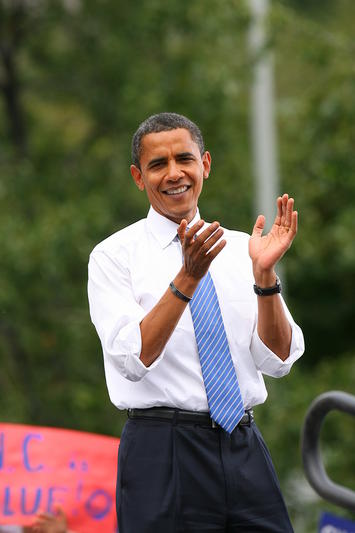
President Obama won re-election primarily because he did so well with two key, and expanding, constituencies: Hispanics and members of the Millennial Generation. Throughout the campaign, Democratic pundits pointed to these two groups as being the key difference makers. They were right.
Let’s start with Hispanics, arguably the biggest deciders in this election. Exit polling shows Obama winning this group — which gave up to two-fifths of their vote to George Bush — by over two to one. In 2008, Obama improved his winning margin with Latino voters from 67% in 2008 to 69% in 2012. And for the first time they represented 10% of the overall electorate.
Obama and the Democrats went after this constituency, taking some risks along the way about a backlash among whites. Obama’s move to not deport young undocumented immigrants if they came to this country as a child and met certain other criteria blurred any negative impact from a still weak economy. In contrast, Romney’s platform of more or less making life so horrible that undocumented immigrants have canceled out all the GOP candidate’s credible economic and social proposals that might have appealed to this group.
To this Republican political malpractice there is an even greater threat: the loss of younger voters. According to CNN exit polls, Millennials voted for Obama 60% to 36% and accounted for 19% of all voters, up from 17% in 2008. Although white male millennials turned slightly less enthusiastic, the President’s huge margin among white women as well as minority millennials — roughly 40 percent of this huge generation — more than made up the difference.
Why did this happen? Generational theorists Mike Hais and Morley Winograd attribute this to several factors. One is the intrinsic optimism of millennials, even in the face of very difficult economic challenges. This blunted Romney’s main argument. Other issues such as gay marriage, favored by most millennials, as well as a more tolerant attitude towards immigration drove them away from the GOP and towards the President.
When you combine millennials and minorities, especially Hispanics, the road to recovery for Republicans gets more and more difficult. If you win close to 60% of the white vote and lose the electoral college decisively, you are heading into very difficult territory. In addition, Hais and Winograd note, there are other constituencies — women, particularly singles as well as those with graduate degrees broke strongly for the President.
Together, they conclude, these groups constitute what they describe as a “21st Century Democratic majority coalition for the next few decades at least.”
So where does this leave the now hapless GOP? Certainly they can’t blame evangelicals and white working class voters who, for the most part, rallied to their cause. The problem now is based in history and demographics. The old Reagan coalition– as has been evident here in California for a decade — is literally too old, and too white, to overcome the combination of minorities, millennials and educated professionals that Hais and Winograd have identified.
What should the Republicans do now? They certainly will need to move away from the immigrant-bashing that cost them dearly among the key ascendant voting blocs of millennials and Hispanics. They will also have to turn their family friendly message into something defined more positive; Romney’s tragedy was to embrace Rick Santorum’s views on issues of gay marriage and contraception instead of embracing family, which is a core value among millennials.
Hais and Winograd add they will need to redefine their party as more open, and appeal to millennial preference for local, grassroots solutions. In the coming four years, there will be an opportunity to challenge the “top-down” decisions made by Obama’s now empowered clerisy. But this opportunity could be lost if Republicans continue to run against the tide of history instead of shaping it to their own advantage.
Joel Kotkin is executive editor of NewGeography.com and is a distinguished presidential fellow in urban futures at Chapman University, and contributing editor to the City Journal in New York. He is author of The City: A Global History. His newest book is The Next Hundred Million: America in 2050, released in February, 2010.
This piece originally appeared at Forbes.
Barack Obama photo by Bigstock..













Hispanic voters for Obama
How many of them were illegal aliens, illegal immigrants, undocumented workers (yeah right, whatever)?? Is that why no polls could get a clear picture of the turnout, and, why so many predicted Romney would win? Approximately 2 million illegal aliens voted?